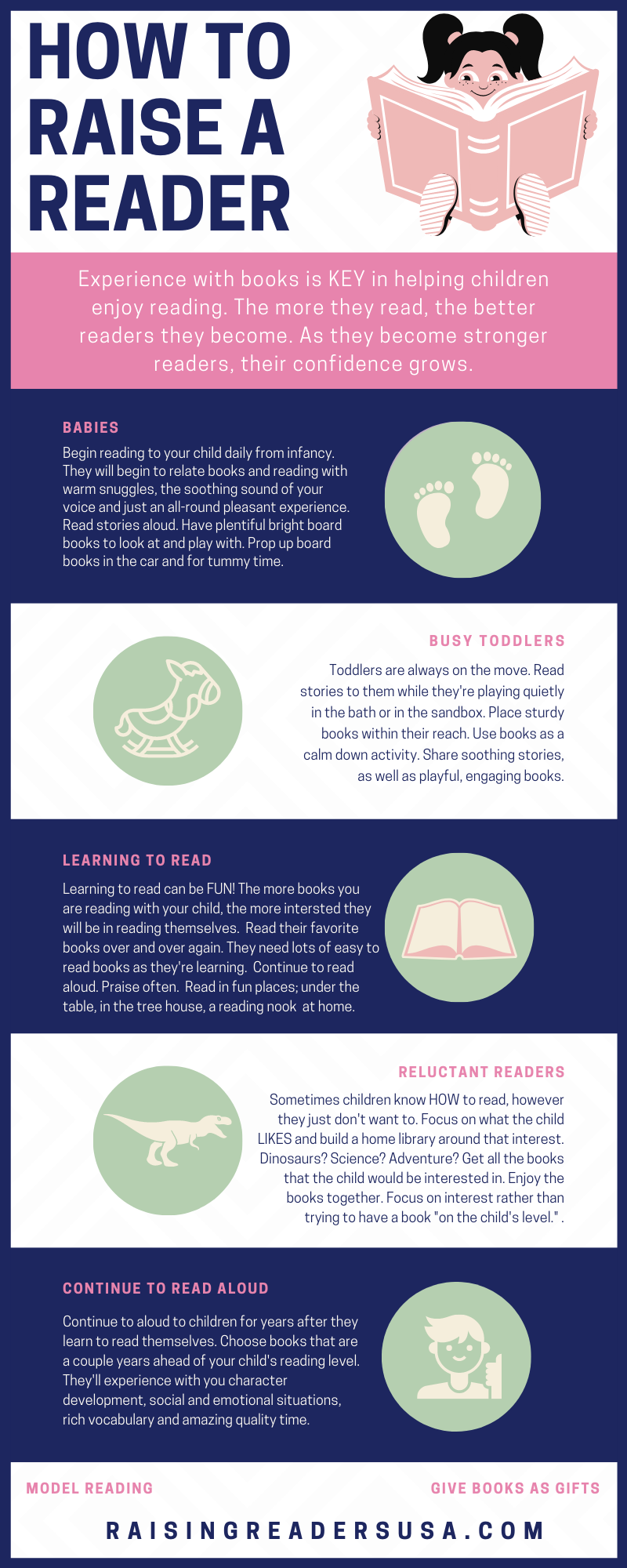How to Raise a Reader
How to Raise a Reader
Are you wanting to help your child love reading? Check out these tips to raise a reader. Readers are Leaders!
Raising a reader sometimes feels like it’s easier said than done. However, here are a few simple strategies to incorporate into your daily life to help you help your children to enjoy reading. And…when your kids enjoy reading, they’ll do more of it, thus they’ll become better readers. Strong readers have a wonderful confidence about what they can learn. It’s a fantastic circle of success! Let’s look at some tips to help you raise readers!
Start Young - during infancy is best
(If you already missed that part, it’s OK - keep reading because there are many more tips for you. 😊)
Reading daily with your babies helps them associate books with your soothing voice, warm snuggles and peaceful relaxation. This also sets the stage for how books are used and the respect that we give them. High contrast pictures in baby books provides amazing stimulization for their eyes. You’ll see babies just a few weeks old just gazing at high contrast pictures. Prop up a board book by their feet when they’re in their car seat. Set up some board books in front of them during tummy time. Where is your baby? Can you add a book or two or three for their enjoyment?
Those Busy Toddlers!
Sometimes parents with toddlers say that their child doesn’t like books anymore. Actually, they may LOVE books, however their need for movement might be even greater. What can you do about this? Read aloud to them while they’re having quiet time, maybe while they’re in the bathtub, sand box or simply playing happily. Have plenty of books that they can play with. Show them how to stack their board books, how to put them in and out of containers. Give them ideas for book play and then let them explore and create on their own. Books are great for naptime and bedtime, of course.
One of my BEST TIPS EVER is to use this age to introduce books to help the child calm down, whether at night or just from a frustrating moment. Grab a lovie and a book and read together. The whole atmosphere will encourage peace and comfort. I have witnessed this first hand with out youngest two children. Once this was the routine to calm down, they then continued it as they were teens. What a gift to give your child - a way to find comfort with a book!
It’s STORYTIME!
Storytime can apply to all the ages! Preschoolers are exploring pretend play and stories help them with even more ideas, experiences, cultures, personalities and funny situations to help support their ever growing imagination. Stories can also give us things to talk about, so certainly encourage your child to ask questions and discuss the ideas and situations that come about in your stories. Read stories together and also have books where your child can access them easily. Maybe quiet time in the afternoon begins with 30 minutes of enjoying their books before they fall asleep.
Are you reading the same story over and over again? This repetition is a fantastic pre-reading event! Your child loves that story because they know they can count on what happens. They get to know the characters and storyline. And they’re probably “reading” the book to you and sometimes to their stuffed animals and dolls.
Learning to Read
The transition from not being able to read to being a reader is a huge one! Let’s make it as fun and stress-free as possible. Read aloud lots during this phase of your child’s life. Children who are read to lots have a big desire to learn to read. In schools it’s much harder to teach a child to read when that child doesn’t really know that there are wonderful things between the two covers of the book. Children who have a rich reading history at home have a strong desire to learn to read. And many times, these children will just start picking it up.
Read lots of rhyming stories - hold your finger under that rhyming word and give a pause so your child could fill in that word. Talk about letter sounds and find letters when you’re out and about or are in your house. Draw letters and words with sidewalk chalk. Let children create those letters in a shallow plate of sand or flour. Is the first letter of their first name their favorite letter of all? WONDERFUL! Those are fun to make with pancake batter or cookie dough.
Keep Reading Aloud
As your child is learning to read, keep reading aloud to them. Reading books about 2 years ahead of your child’s current reading level is a wonderful way to help your child have a goal of what they’re working toward. Your child’s listening level is higher than their actual reading level, so help your child keep that advantage. The vocabulary exposure is wonderful, as well as giving you and your child opportunities to talk about social and emotional situations that you may or may not have discussed otherwise. It gives different points of view. You’ll probably never regret having read with your child. 😉
Reluctant Readers
Does your child know HOW to read and yet they just don’t like it? What can you do? Give them books that are on the topics that they LOVE. When they love penguins, then give them books and games about penguins. If they want another penguin book, then I’d totally encourage getting your hands on it. Their desire to know more about topic will drive their interest into those books. Their reading experience in those books will increase their reading level, when reading is easier, they’ll want to do it more, especially if it’s something they’re interested in. Sometimes reluctant readers are actually readers who are wishing for really cool non-fiction books or high adventure chapter books.
When children are reluctant to read, focus more on their interests than their reading level. When they’re enjoying books again, then they’ll become stronger readers.
Get Yourself a Great Book
Model reading for pleasure at home. You are often reading on your phone. Children see this as screen time. Grab a book and enjoy reading for pleasure. The example you’re providing for your children by doing this is important and, hopefully, you’ll enjoy it too.
Give Books as Gifts
When you give books as gifts, you’re showing that they’re important to you and that you hope they’ll be valued. Books are gifts that are opened again and again. When we give books as gifts, we’re giving a gift that will help the child in so many ways.
I’m pretty passionate about literacy! I was working with a second grader a few years ago. He struggled with reading and I was working with him weekly to gain confidence in his reading. We were working with flap books that had a question on one flap and the answer under the flap. These were amazing for him because he could usually read the question and then I’d read the answer under the flap - we were completely engaged together.
He said, “Mrs. Wartman, I don’t like reading and I don’t like books. But you have really cool books.”
I said, “Do you have books like this at home?”
He said, “No, I don’t have cool books. I only have dumb books.”
This changed my mission. I went from wanting to help get books into children’s hands, to wanting to get GREAT books into children’s hands AND HEARTS.
Click here to see the “cool books” that he and I were reading that day.



